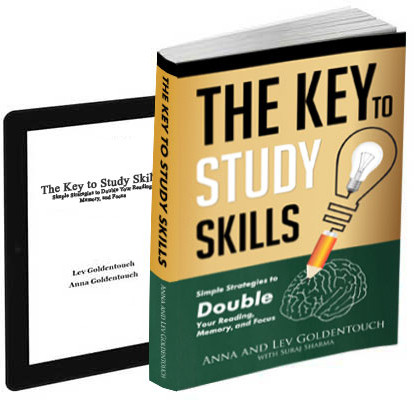Mental models are the invisible frameworks that shape how we interpret the world and solve problems. When applied to education, “mental models” help learners approach knowledge more systematically and effectively. Think of them as cognitive shortcuts or strategies that streamline complex learning into manageable parts. Whether you’re studying math, philosophy, or a musical instrument, recognizing the mental architecture behind your understanding can accelerate your growth.
Unfortunately, most of us are never explicitly taught these mental models. Yet, they are used—consciously or unconsciously—by top performers and lifelong learners in every field. This article unveils ten powerful mental models for learning, explaining how each works, when to apply it, and how you can use it to maximize retention, creativity, and progress. For additional insights into lifelong learning, check out this lifelong learning resolution guide.
1. Problem Solving as a Search Space
When facing a new problem, your brain isn’t instantly equipped with a solution. Instead, it navigates a problem space—an abstract mental terrain made up of possible states, steps, and outcomes. As Herbert Simon and Allen Newell explained in their seminal work Human Problem Solving, we often solve problems by mapping out a series of potential moves from our current situation to the desired goal.
This approach mirrors how a Rubik’s Cube is solved: from a disordered starting point to a perfectly aligned finish, constrained by allowable moves. The better you understand the structure of the problem space, the faster you can search through it. This model emphasizes the importance of developing methods and strategies in learning rather than relying solely on trial and error.
This model also ties in well with structured approaches to thinking and accelerated learning strategies, many of which are explored in the accelerated learning misconceptions article.
2. Retrieval Enhances Retention
Learning isn’t just about taking in information—it’s about pulling it back out. One of the strongest mental models in cognitive psychology is that retrieving knowledge strengthens memory far more than simply reviewing it. In other words, testing yourself is not just an evaluation method—it’s a learning tool.
This is because your brain prioritizes remembering information it deems useful, and retrieval sends a signal that this knowledge matters. In contrast, passive review offers little incentive for your brain to retain the material. This model is critical in self-directed learning environments, especially when preparing for high-stakes exams or developing new skills.
If you’re curious about how writing reinforces learning, consider this KeyToStudy Learning Skills bundle, which applies retrieval techniques to memory enhancement and cognitive mastery.
3. Learning is Exponential, Not Linear
The more you know, the more you’re able to learn. This model is rooted in the concept that prior knowledge creates cognitive hooks for new material to latch onto. Like a growing snowball, knowledge builds upon itself.
In early stages, this makes learning feel slow or difficult. But as your understanding deepens, connections form more easily. For example, someone with a background in Latin finds it easier to learn French or Spanish because of shared roots. This is why foundational knowledge is so crucial in any subject area.
So when learning feels hard, it doesn’t mean you lack talent—you might simply be in the “knowledge sparse” zone. Push through, and the learning curve will flatten out over time. You’ll go from struggling to grasp basic terms to effortlessly connecting ideas across disciplines.
4. Creativity Is Iteration, Not Invention
We often romanticize creativity as divine inspiration. But research shows it’s mostly recombination. New ideas evolve from existing ones. Think of creativity as a genetic mutation: old concepts are adapted, combined, and refined until something novel appears.
Historian Matt Ridley coined the term “ideas having sex” to describe this phenomenon. Even artistic revolutions start with imitation. Picasso, for instance, mastered traditional art before inventing Cubism.
To become more creative, immerse yourself in existing knowledge and give yourself room to play. Copying as a beginner is not just acceptable—it’s vital. Iteration builds confidence, and confidence fuels deeper experimentation.
Check out this piece on learning left-hand calligraphy to see how deliberate copying cultivates skill, style, and originality.
5. Transfer Requires Repetition and Breadth
Skill transfer is the ability to apply what you’ve learned in one context to another. But research consistently shows that transfer is limited. You improve at what you practice.
However, you can hack this limitation by practicing across a wide variety of contexts. For example, practicing logic puzzles won’t make you better at public speaking, but practicing structured argumentation in different fields might. Diversifying practice creates overlapping areas that boost adaptability.
So while skills are specific, knowledge is versatile. The broader your base, the more likely you are to connect the dots across disciplines. The takeaway? Learn widely, and always build bridges between domains.
6. Cognitive Bandwidth is Scarce
You can only juggle a few things in your working memory at a time—four items, on average. This model helps explain why overloaded learners struggle and why streamlined learning materials work best.
Known as Cognitive Load Theory, this model urges educators to reduce unnecessary mental effort during learning. That means simplifying visuals, avoiding redundant information, and focusing on one concept at a time.
To apply this model, break lessons into smaller chunks, use clean visuals, and always align your teaching with your learners’ current level of understanding. Otherwise, attention dissipates, and learning stalls. Chunking, mnemonics, and spaced repetition are all great tools to mitigate overload.
7. Learning Loves Success
Although failure is often seen as a great teacher, success teaches more efficiently. Failure teaches you what not to do, but success reveals what works and why.
This model suggests you aim for an 85% success rate when practicing a skill. Below that, you’re likely failing too often to learn effectively. Above that, you’re not challenging yourself enough. The sweet spot is where your brain is pushed just enough to grow.
Find your optimal learning difficulty and fine-tune your approach. Use feedback loops, mentors, or self-testing to stay calibrated. For insights into aligning career growth with learning success, explore success, passion, and satisfaction.
8. We Think in Examples, Not Abstractions
Logic and theory often feel abstract until they are tied to concrete examples. Our brains don’t reason well in pure logic; we build mental models of reality by imagining scenarios.
Philip Johnson-Laird’s theory posits that we simulate outcomes in our minds. When faced with a logical problem, we don’t manipulate formal symbols. We visualize examples. That’s why stories, analogies, and metaphors are so effective in learning.
This explains why case-based teaching and scenario-based learning are incredibly effective. If you want to teach a principle, anchor it in an example.
Check out this helpful post on focusing on your strengths and how real-life case studies clarify abstract ideas.
9. Expertise Conceals the Basics
As skills become automated, they require less attention. This frees up mental energy but comes with a downside: experts forget what it’s like to be a beginner.
This phenomenon is called the Curse of Knowledge. When a task becomes second nature, it’s hard to explain. That’s why great teachers must constantly reconnect with foundational skills. Otherwise, they skip steps or explanations, unintentionally leaving learners confused.
As a learner, don’t be afraid to ask your mentors to break things down. As a teacher, periodically revisit beginner-level content to ensure you’re still communicating clearly. Expertise should enhance empathy, not diminish it.
10. Relearning is Faster Than Learning
Even when you forget something, your brain retains the faint traces of past learning. This means relearning is much faster than starting fresh. This principle aligns with Ebbinghaus’s forgetting curve: memory declines over time but can be revived quickly.
This model should motivate you to embrace wide learning, even if you forget much of it. The scaffolding remains. A second pass at the subject will be exponentially quicker. The key is to revisit what you’ve learned periodically.
So, read widely, explore new ideas, and don’t worry if everything doesn’t stick. The effort builds a network of dormant knowledge that can be reawakened when needed. Relearning revives both facts and skills with surprising efficiency.
Final Thoughts: Mental Models in Practice
Incorporating mental models into your learning routine can transform your educational journey. These cognitive frameworks clarify what to focus on, how to practice, and how to retain information long-term.
Whether you’re a student, teacher, entrepreneur, or curious mind, these models empower you to learn smarter, not harder. They guide how you solve problems, manage memory, handle failure, and embrace creativity.
Understanding “what is mental model” or “what is mental modeling” isn’t just a matter of academic interest—it’s practical, applicable, and transformative. You begin to shift from passive absorption to active construction.
To learn more actionable strategies, follow our community on Facebook or explore the full KeyToStudy Learning Skills bundle, designed to supercharge your cognitive abilities, focus, and memory.
In the end, success in learning doesn’t depend solely on effort, but on how wisely that effort is directed. Choose the right models, and everything else becomes easier.

Get 4 Free Sample Chapters of the Key To Study Book
Get access to advanced training, and a selection of free apps to train your reading speed and visual memory

